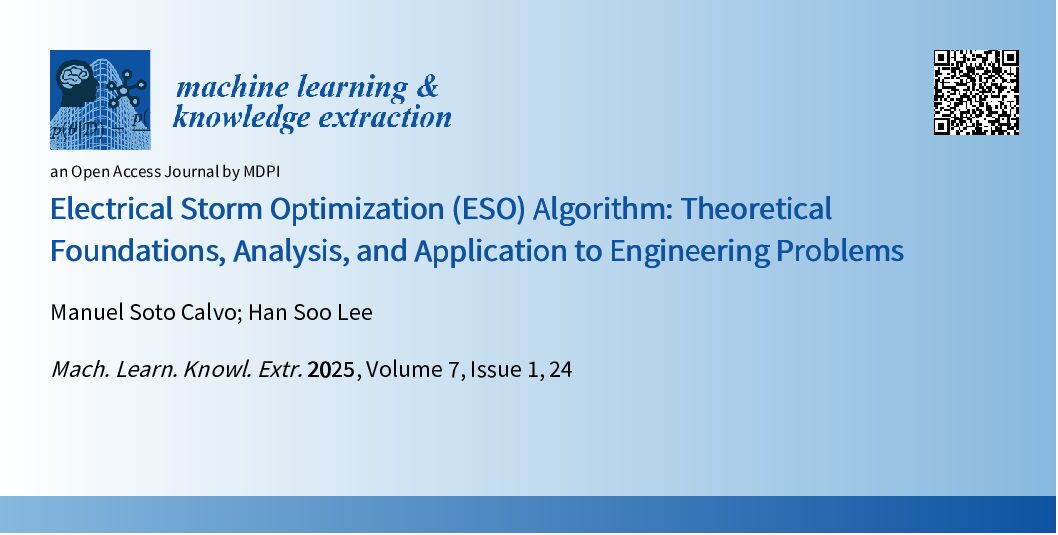Soto Calvo M, and Lee HS. Electrical Storm Optimization (ESO) Algorithm: Theoretical foundations, analysis, and application to engineering problems. Mach. Learn. Knowl. Extr. 7(1), 24. Open access
Abstract
The electrical storm optimization (ESO) algorithm, inspired by the dynamic nature of electrical storms, is a novel population-based metaheuristic that employs three dynamically adjusted parameters: field resistance, field intensity, and field conductivity. Field resistance assesses the spread of solutions within the search space, reflecting strategy diversity. The field intensity balances the exploration of new territories and the exploitation of promising areas. The field conductivity adjusts the adaptability of the search process, enhancing the algorithm’s ability to escape local optima and converge on global solutions. These adjustments enable the ESO to adapt in real-time to various optimization scenarios, steering the search toward potential optima. ESO’s performance was rigorously tested against 60 benchmark problems from the IEEE CEC SOBC 2022 suite and 20 well-known metaheuristics. The results demonstrate the superior performance of ESOs, particularly in tasks requiring a nuanced balance between exploration and exploitation. Its efficacy is further validated through successful applications in four engineering domains, highlighting its precision, stability, flexibility, and efficiency. Additionally, the algorithm’s computational costs were evaluated in terms of the number of function evaluations and computational overhead, reinforcing its status as a standout choice in the metaheuristic field.

